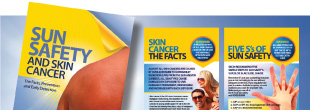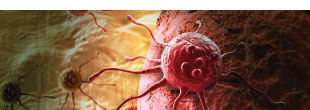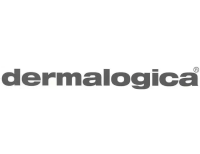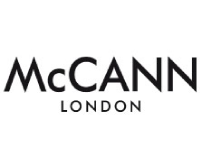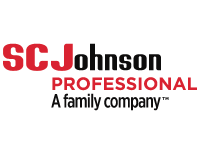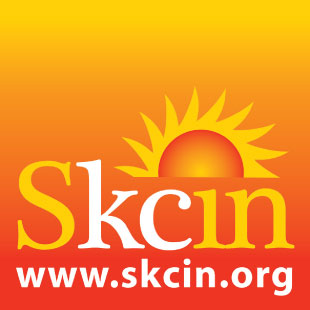
RAISING AWARENESS THROUGH EDUCATION
PROMOTING PREVENTION & EARLY DETECTION CAMPAIGNING FOR CHANGE
SKCIN: THE KAREN CLIFFORD SKIN CANCER CHARITY / REGISTERED CHARITY: 1150048

WE NEED YOUR HELP! PLEASE HELP US TO STOP SKIN CANCER TAKING MORE LIVES. WE ARE HUGELY GRATEFUL FOR YOUR SUPPORT.
At Risk Groups
Sun Safety & Prevention
Over 80% of all skin cancers are preventable by following
just 5 simple sun safe measures: Slip, Slop, Slap, Slide, Shade...

A child’s delicate skin can burn within minutes causing
irreparable damage - learn how to protect them...

Do you know your facts about Sunscreen? Which to buy, what
SPF, UVA protection, how much to apply, when to reapply...

Did you know that the snow reflects up to 80% of sun
burning UV radiation! Learn about winter sun protection...

Is your child’s school or pre-school Sun Safe?
Make sure children are protected during school hours...

Do you work outdoors? Is your workplace Sun Safe?
Find out more about Sun Safety in the Workplace...
Who is most at risk of skin cancer?
Unfortunately the simple fact is we are all it risk of developing skin cancer.
However, those that spend greater amounts of time outdoors, exposed to UV radiation for prolonged periods of time are naturally at greater risk of sun damage and developing skin cancer.
For example, those that work outdoors, outdoor sports and winter sports enthusiasts, avid gardeners and children all naturally spend greater amounts of time outdoors, exposed to UV.
Regardless of the amount of time or frequency an individual spends outdoors, when the UV index is 3 or above, sun safety measures should be implemented to protect our skin from sun damage.
Skcin recommend everyone follows the Five S's of Sun Safety and regularly checks their skin for signs of change. However, the following at risk groups identified below should take extra care to protect their skin - for further information and advice - click on the 'at risk' groups identified below.
CHILDREN
Children spend a great deal of time outdoors which is healthy, but their delicate skin can burn very easily which can cause irreparable damage and lead to skin cancer in later life.
It is very important that children:
- Always use sun protection measures and follow the Five S's of Sun Safety
- Parents should remember school times too and send their child to school with a suitable sun hat and sunscreen. Lunch breaks are spent outdoors when UV penetration is strongest and extended periods of play, outdoor lessons, PE and school trips are often when children get caught out!
- Remember that up to 80% of the suns harmful UV rays can penetrate cloud cover and can damage the skin even on cloudy days.
For detailed information and sun safety advice specifically for children, click here >
OUTDOOR
WORKERS
Outdoor workers naturally spend a great deal of time outdoors, exposed to UV radiation and should therefore take extra care to ensure they are properly protected when at work and home.
Unfortunately, the subject of sun safety is often neglected in the workplace as a serious health and safety issue, so outdoor workers should be extra careful in ensuring they protect themselves.
- Outdoor workers should also remember that up to 80% of the suns harmful UV rays can penetrate cloud cover and can damage the skin even on cloudy days.
For detailed information and sun safety advice specifically for outdoor workers, click here >
OUTDOOR
SPORTS
Those who regularly participate in outdoor sports or leisure persuits naturally spend prolonged periods of time exposed to solar UV radiation and should therefore take extra care to protect their skin.
It is very important that outdoor sports enthusiasts:
- Always use sun protection measures and follow the Five S's of Sun Safety
- Remember that up to 80% of the suns harmful UV rays can penetrate cloud cover and can damage the skin even on cloudy days.
- Always reapply sunscreen after heavy perspiring / towelling
- Whether taking part in a game of football, round of golf, or watching the cricket the tennis for example - remember you are placing yourself at risk, so be prepared, cover up and take your sunscreen with you!
WINTER
SPORTS
Did you know that snow can reflect the sun's UV rays by up to 80%, this combined with a higher altitude (UV radiation increases 4-5% with every 1000 feet) can make winter sun every bit as damaging on the slopes as it is on the beach!
It is very important that outdoor sports enthusiasts:
- Always use sun protection measures and follow the Five S's of Sun Safety
- Remember that up to 80% of the suns harmful UV rays can penetrate cloud cover and can damage the skin even on cloudy days.
- Always reapply sunscreen after heavy perspiring / towelling
For further detailed information on sun safety for winter sports click here >
AVID
GARDENERS
Avid gardeners spend prolonged periods out time outdoors in the warmer months tending to thier gardens and/or allotments - this naturally places them at greater risk of sun damage and skin cancer.
It is very important that gardeners:
- Always use sun protection measures and follow the Five S’s of Sun Safety
- Keep their head and shoulders covered which can easily burn
- Remember that up to 80% of the suns harmful UV rays can penetrate cloud cover and can damage the skin even on cloudy days.
- Remember to reapply their sunscreen at least every two hours
- Always reapply sunscreen after heavy perspiring / towelling
For further detailed information on the Five S's of Sun Safety click here >
SUNBED
USERS
Sunbed users are at a much greater risk of developing skin cancer!
The facts are compelling:
- The intensity of UV rays in some sunbeds can be more than 10 times stronger than the midday mediterranean sun!
- Using sunbeds for the first time before the age of 35 increases the risk of developing melanoma skin cancer by 59%.
- Regular sunbed use under the age of 30 increases the risk of skin cancer by an alarming 75%!
- Short, intense and irregular UV exposure, like you receive from sunbed use is the fastest way to damage your skin. Damage increases with each session, is irreparable and can lead to melanoma - one of the biggest cancer killers in 15-34 year ols in the UK!
Risk of skin cancer and your skin type
In addition to the amount of time and frequency we expose our skin to UV radiation, our skin type is a major contributing factor to our risk of sun damage and developing skin cancer. It is important however to acknowledge that all skin types can be damaged by over-exposure to UV radiation and therefore to varying degrees we are ALL at risk of developing skin cancer. However, generally, those with fairer skin that is more susceptible to burning are at greater risk.
Do you know your skin type?
Click on the skin type classification below to that best matches your own skin to find out more about your level of associated risk and what you should do to prevent skin cancer.
SKIN TYPE 1
This skin type typically always burns and never tans in the sun.
This skin type is therefore extremely susceptible to skin damage and the development of skin cancers such as basal cell carcinoma, squamous cell carcinoma and melanoma - the deadliest form of skin cancer.
It is hugely important that individuals with this skin type:
- Always use sun protection measures and follow the Five S's of Sun Safety
- Use a minimum SPF 30+, broad spectrum sunscreen
with maximum UVA protection and reapply at least every 2 hours. - NEVER allow themselves to burn
- Check their skin at least once a month for signs of change
- Seek professional advice with ANYTHING suspicious
- Have an annual professional screening
SKIN TYPE 2
This skin type typically often burns and rarely tans in the sun. This skin type is is therefore highly susceptible to skin damage and the development of skin cancers such as basal cell carcinoma, squamous cell carcinoma and melanoma - the deadliest form of skin cancer. It is hugely important that individuals with this skin type:
- Always use sun protection measures and follow the Five S's of Sun Safety
- Use a minimum SPF 30+, broad spectrum sunscreen with maximum UVA protection and reapply at least every 2 hours.
- NEVER allow themselves to burn
- Check their skin at least once a month for signs of change
- Seek professional advice with ANYTHING suspicious
- Have an annual professional screening
SKIN TYPE 3
This skin type sometimes tans and sometimes burns in the sun. This skin type is therefore susceptible to skin damage and the development of skin cancers such as basal cell carcinoma, squamous cell carcinoma and melanoma - the deadliest form of skin cancer. It is important that individuals with this skin type:
- Always use sun protection measures and follow the Five S's of Sun Safety
- Use a minimum SPF 30+, broad spectrum UVA protection sunscreen
- NEVER allow themselves to burn
- Check their skin at least once a month for signs of change
- Seek professional advice with ANYTHING suspicious
- Have an annual professional screening
SKIN TYPE 4
This skin type typically tans easily and is less likely to burn This skin type is however still at risk of developing skin cancer It is important that individuals with this skin type:
- Use sun protection measures and follow the Five S's of Sun Safety
- Use an SPF 30+, broad spectrum UVA protection sunscreen
- Check their skin at least once a month for signs of change
- Seek professional advice with ANYTHING suspicious
- Have an annual professional screening
SKIN TYPE 5
This skin type typically tans easily and rarely burns This skin type is at lower risk, but still can develop skin cancer and arcal lentiginous melanoma which is common among darker-skinned individuals. These melanomas typically appear on areas of the body that have not been exposed to the sun and all-too-often remain undetected until after the cancer has spread to other body parts. It is important that individuals with this skin type:
- Use sun protection measures and follow the Five S's of Sun Safety
- Check their skin at least once a month for signs of change
- Always check palms of hand, soles of feet and mucous membranes
- Seek professional advice with ANYTHING suspicious
- Have an annual professional screening
SKIN TYPE 6
This skin type typically does not burn in the sun, This skin types is still at risk of skin cancer and developing arcal lentiginous melanoma which is common among darker-skinned individuals. These melanomas typically appear on areas of the body that have not been exposed to the sun and all -too-often remain undetected until after the cancer has spread to other body parts. It is important that individuals with this skin type:
- Use sun protection measures and follow the Five S's of Sun Safety
- Check their skin at least once a month for signs of change
- Always check palms of hand, soles of feet and mucous membranes
- Seek professional advice with ANYTHING suspicious
- Have an annual professional screening
You may also be interested in the following related topics:
Vitamin D DebateSkin Cancer FactsSunscreen FactsEarly Detection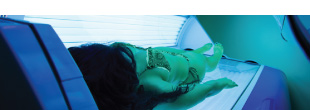
out the truth and misconceptions
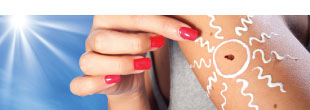
what you should be looking for...
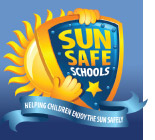
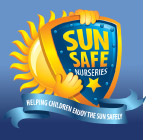
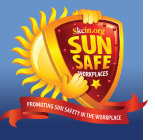
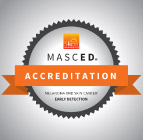
Articles of interest
SIG ROOFING PARTNERS WITH SKCIN
Aptly timed during skin cancer awareness month, National roofing merchant SIG Roofing has announ...
28th May 2024 3:05pm
SKCIN, a charity that specialises in the prevention and early detection of skin cancer through educational interve...
1st May 2024 12:39pm
AHEAD OF NATIONAL SKIN CANCER AWARENESS MONTH IN MAY, BRITISH BEAUTY BACKS VAT BURN CAMPAIGN AMIDST SKIN CANC...
26th Apr 2024 2:16pm
SUNAK WARNED MELANOMA CASES WILL INCREASE WITHOUT GOVERNMENT ACTION
Skcin are proud to support SNP MP Amy Callaghan with her on-going VAT Burn Campaign as she...
28th Nov 2023 12:20pm
SKCIN are delighted to highlight a positive initiative by New College Lanarkshire in Motherwell. The college is supporti...
22nd Jun 2023 1:05pm
